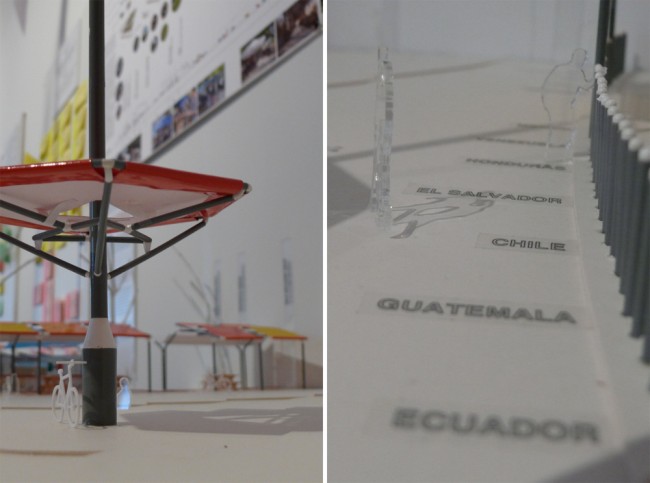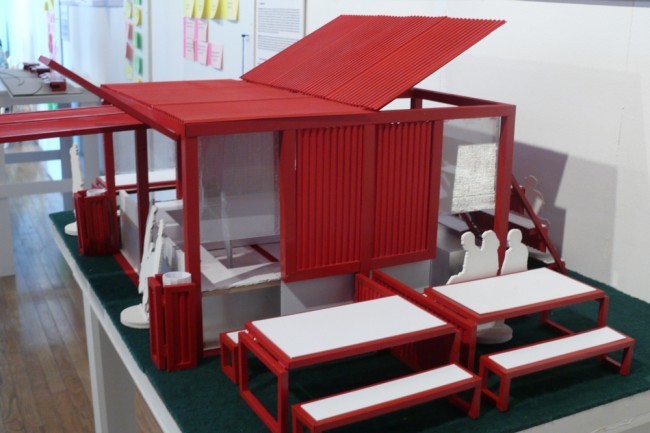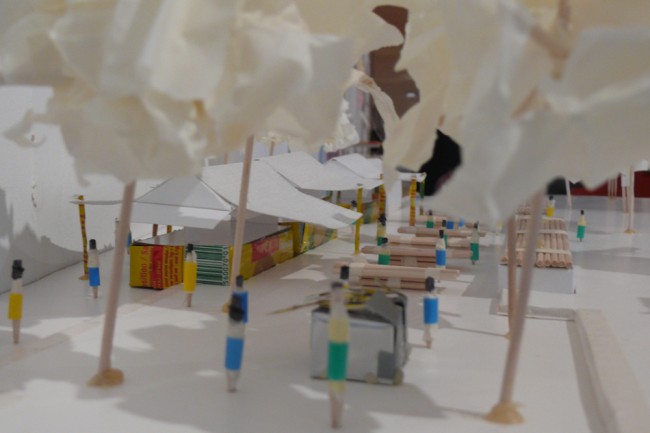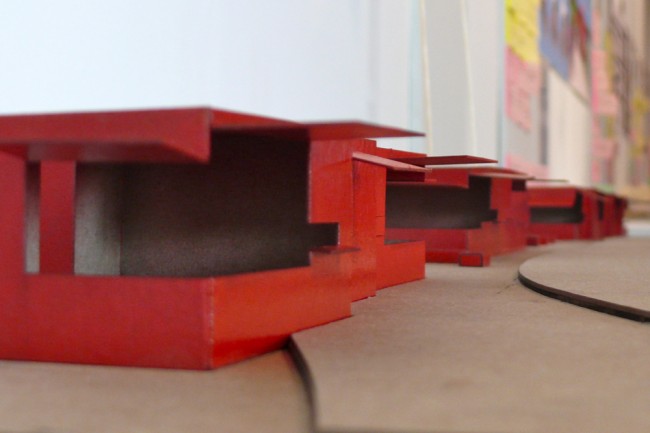
We are celebrating 15 years — and counting — of stories that are deeply researched and deeply felt, that build a historical record of what the city has been.
We are celebrating 15 years — and counting — of stories that are deeply researched and deeply felt, that build a historical record of what the city has been.
The Red Hook Food Vendors have been cooking up Latin American specialties since 1974 at Red Hook Park in Brooklyn. It has been a longstanding tradition for food lovers to go enjoy delicious cuisine while watching fútbol games at the adjacent field. In 2008, the Vendors were issued a six-year permit for the continuation of the market (they had been working on temporary permits since their inception). As a result, the temporary food trucks that were necessary to comply with health codes were too expensive for vendors. So, in an effort to install a more permanent marketplace to the site, vendors teamed up with Architecture for Humanity to organize a Call for Ideas. The competition called for permanent spaces, maintaining compliance with the Department of Health, allowing for vendors to set up cooking venues that simultaneously enliven the surrounding environment. Architecture for Humanity “hosted this competition to start a conversation about what it will take to regenerate the vitality of the market space that the vendors originally created.”
On Saturday, September 18, an exhibition celebrating the Red Hook Food Vendors opened at the Queens Museum of Art, which showcases the spirit and liveliness so often associated with the Vendors. It was a festive affair, with a DJ and a selection of food from the local vendors. The show displays photography from the Red Hook community photo project, What’s the Hook?, and proposals for a new marketplace at Red Hook Park from the Architecture for Humanity competition. All of the entries are exhibited, but the four finalists have drawings and models to showcase their submissions. If you visit the exhibit before the closing on October 3rd, you can provide input for the various schemes by putting your thoughts on sticky notes and placing them next to the entries. Here is a brief introduction to the finalists:

Food Fence by Mateo Pinto & Carolina Cisneros
This proposal focuses on civic activities and public spaces “reshaping progressively over time to address the growing needs of vendor and vicinity.” It utilizes existing fence systems to create boundaries for various services and activities, while framing the vendor stalls around the perimeter of the ball fields.

Food Coloring by Asaf Yogev & Craig Tooman
Taking inspiration from the local industry and history of the site, Food Coloring uses recycled shipping containers as permanent food stalls. It provides a frame for the soccer fields and the flexibility of additional seating during the off-season. They use different colored containers to categorize based on food type or origin of the cuisine, allowing visitors to easily identify the food that they are looking for.

Double Sided by Emilie Graham
This design utilizes a covered hall with connecting bleachers to provide seating for ball games at the adjacent field. The hall also serves as a gathering place for community members and can be transformed into exhibition space for local artists during the off-season.

New Vendor Kiosk by Jackie Luk
The Vendor Kiosks are folly-esque structures that serve as bright, eye-catching sculptures (as well as excess seating) when not in use. They utilize inexpensive material, manual cross ventilation to cut down on expensive exhaust systems, and rainwater collection systems.
The projects represent a diverse range of contributions from a global audience (one finalist had flown in from France!). The models and drawings are helpful in envisioning how the surrounding space would be affected by the structures and they invite viewers to share their thoughts in the interactive polling techniques – a fun way for everyone to contribute to the community’s growth.
Red Hook Food Vendors is on view at the Queens Museum of Art through October 3rd, 2010.
The views expressed here are those of the author only and do not reflect the position of Urban Omnibus editorial staff or the Architectural League of New York.
The views expressed here are those of the authors only and do not reflect the position of The Architectural League of New York.